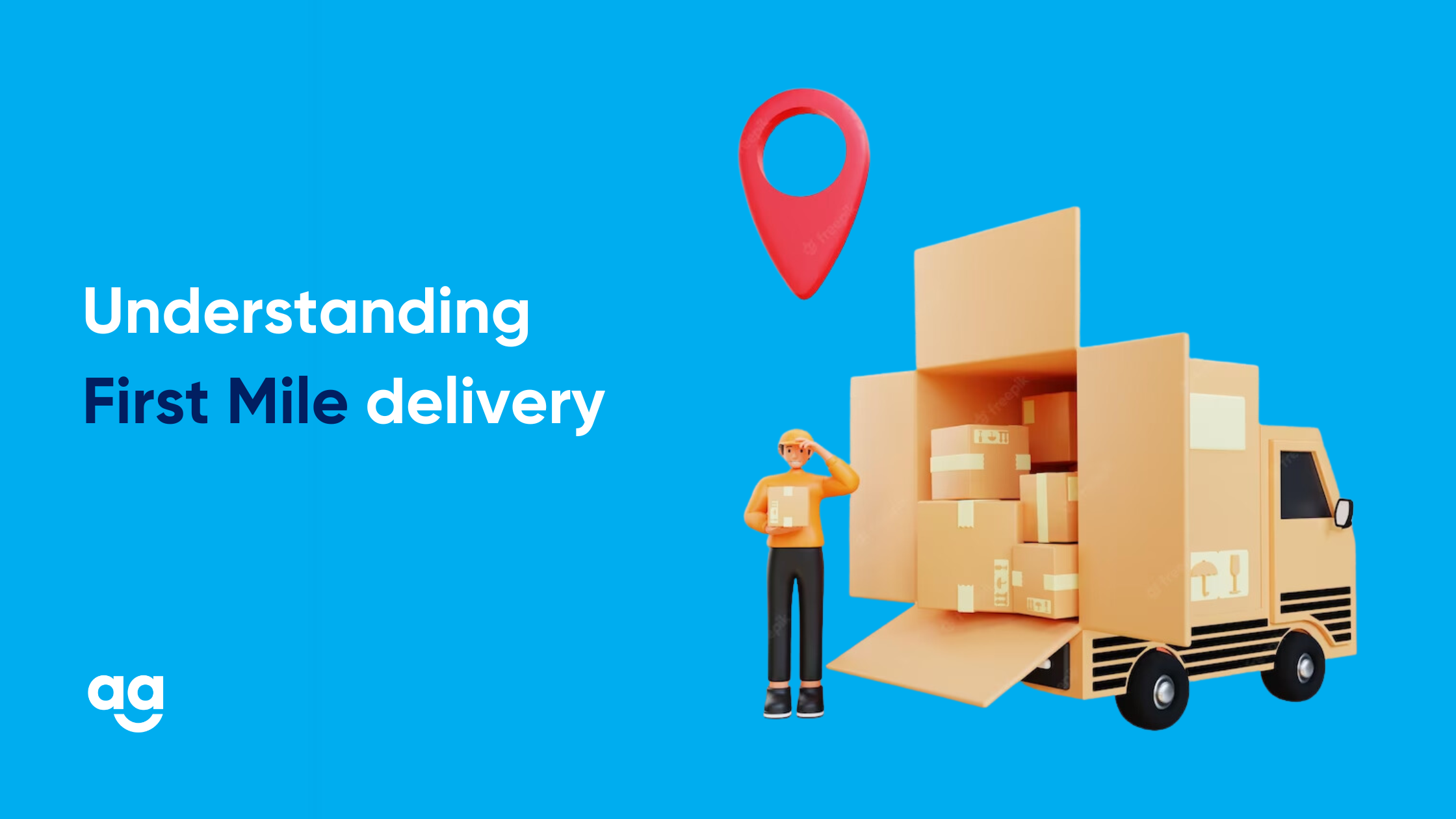Understanding First Mile Delivery
With the e-Commerce boom in recent years, a lot of focus has been given to last mile delivery. To keep up with rising customer expectations of visibility, speedy and convenient deliveries, businesses have been heavily investing in real-time tracking and better fulfillment. However, regardless of the similarities between first-mile delivery and last-mile delivery and their importance in the supply chain, the former has often been neglected.
We all know how important the first step is when embarking on a trip with a thousand miles to go. When it comes to the supply chain, the first step is more crucial than ever!
What is First Mile Delivery?
First mile delivery refers to the initial stage of transportation where goods are transported from the seller’s warehouse or distribution center to the transportation hub, which could be a port, airport, or a transportation network hub. It is the first and most important leg of the supply chain that begins when goods leave the seller’s location and ends when they arrive at the transportation hub.
This stage is crucial because it sets the tone for the rest of the logistics chain, and any delay or inefficiency during the first mile delivery process can have rippling effects on the entire supply chain. The first mile delivery process involves activities such as order processing, order fulfillment, and transportation of goods to the transportation hub.
How is First-Mile Important to an Organization?
The first mile of delivery is like the foundation of a structure; without it, the remainder of the supply chain would collapse. First-mile delivery optimization has a domino effect on the remainder of the supply chain, thus making it run like a well-oiled machine. Here are some reasons why first-mile delivery is important to organizations:
Cost Savings:
Optimizing the first-mile delivery process can help organizations reduce transportation costs, minimize delays, and improve efficiency. By choosing the right mode of transportation, optimizing routes, and properly packaging goods, organizations can save time and money and improve their bottom line.
Improved Customer Satisfaction:
The first-mile delivery process is often the first interaction that customers have with an organization’s logistics operation. By ensuring timely and reliable delivery, organizations can improve customer satisfaction and build loyalty.
Increased Flexibility:
Efficient first-mile delivery enables organizations to be more agile and responsive to changes in demand, customer preferences, and market conditions. By having the ability to quickly transport goods to their destination, organizations can respond to changing needs and adapt their supply chain operations accordingly.
Reduced Risk:
Effective first-mile delivery can help organizations mitigate risks such as loss or damage to goods, delivery delays, and compliance issues. By using real-time tracking and visibility tools, organizations can identify potential issues and take proactive steps to address them before they become problems.
Best Practices for Streamlining First-Mile Delivery
To ensure smooth first-mile delivery, businesses should follow these best practices:
Optimize Routing and Scheduling:
Proper routing and scheduling of deliveries can help reduce transportation costs, minimize delays, and ensure that goods are delivered on time. It is important to use a routing software that can optimize routes based on traffic, road conditions, and delivery locations.
Invest in Quality Transportation:
The right mode of transportation can make a big difference in the efficiency of the first-mile delivery process. Businesses should choose vehicles that are appropriate for the type of goods being transported, and invest in high-quality equipment that is well-maintained.
Ensure Proper Packaging:
Proper packaging of goods can prevent damage and reduce the risk of loss during transportation. Businesses should use durable packaging materials that can withstand the rigors of transportation, and properly label packages with clear identification and tracking information.
Use Real-Time Tracking and Visibility:
Real-time tracking and visibility can help businesses monitor the progress of deliveries and address any issues in real-time. By leveraging technology such as GPS tracking and mobile applications, businesses can stay informed about the location of goods, estimated delivery times, and any potential delays.
Establish Clear Communication Channels:
Clear communication between the logistics team, transport partners, and customers is essential for ensuring smooth first-mile delivery. Businesses should establish clear communication channels and provide regular updates on delivery status, changes in schedule, and any issues that arise.
By following these best practices, businesses can streamline their first-mile delivery process, improve efficiency, and enhance customer satisfaction. Proper planning, investment in technology, and effective communication can go a long way in ensuring that goods are delivered on time and in optimal condition.
Takeaway
The most important aspects of the “first mile” of delivery were briefly covered here. Companies, in retrospect, put too much stock on the last mile of delivery when it came to customer experience. Recently, however, it has become abundantly evident that first-mile optimization is more important than ever. To succeed or fail as an e-commerce behemoth, one must have first-rate first-mile delivery management operations. Shipyaari makes it easy to manage these steps.







 Shipping
Shipping







